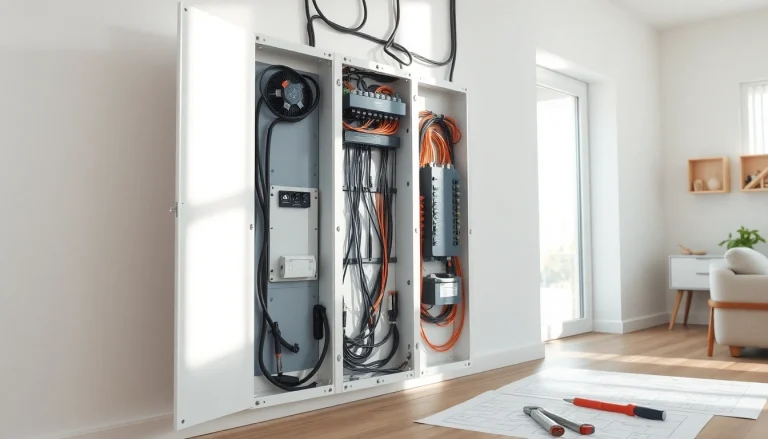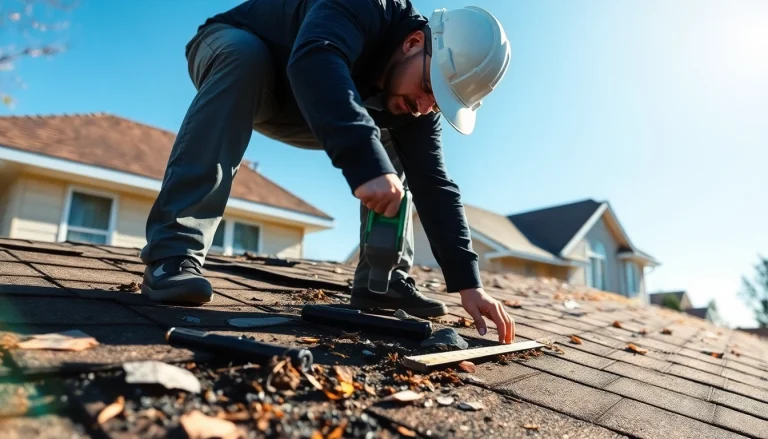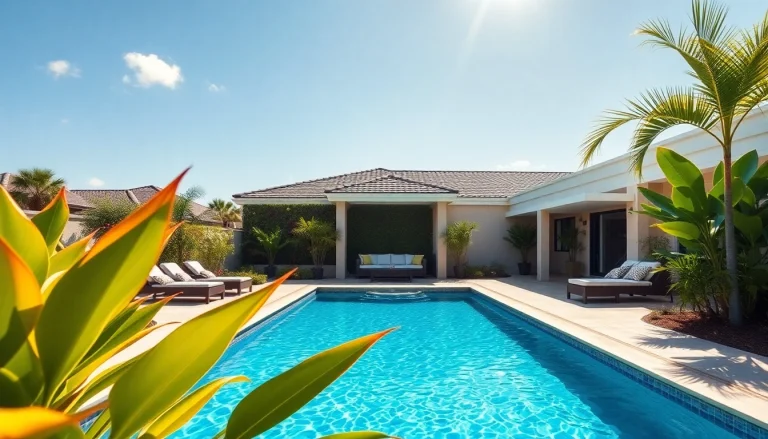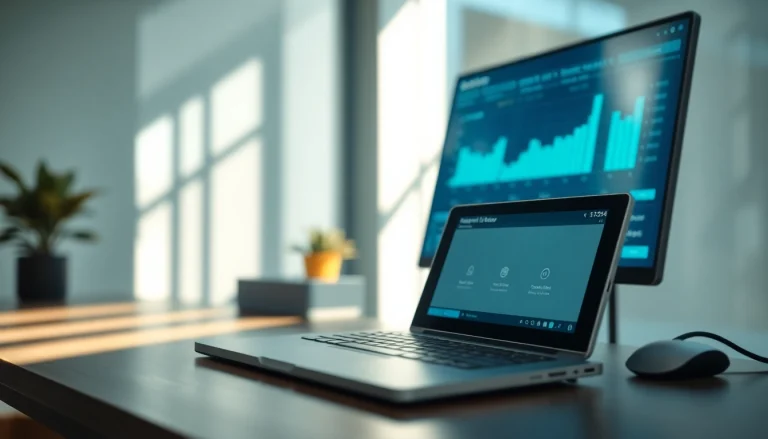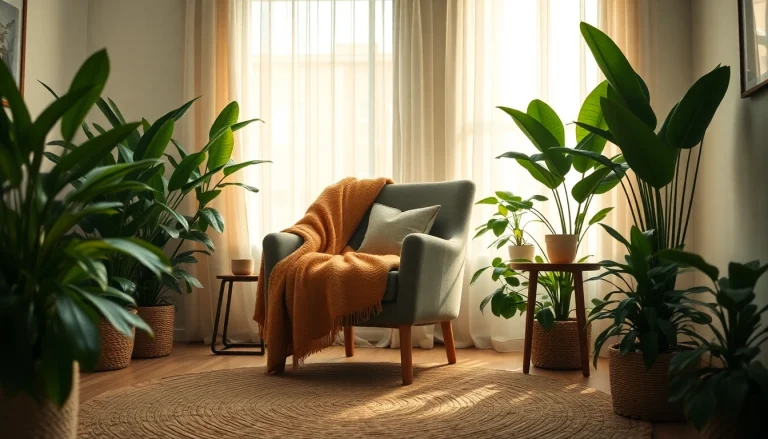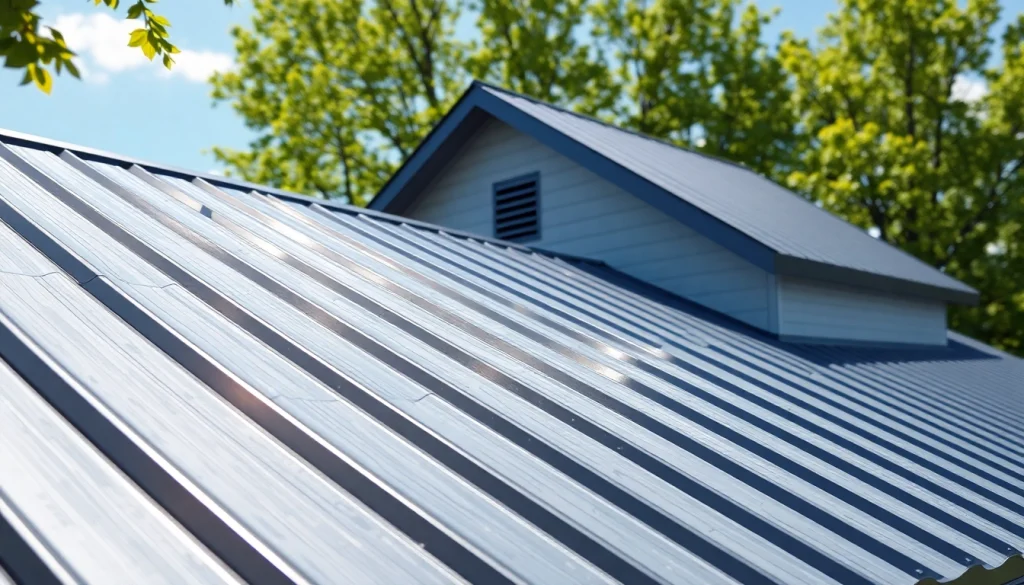
Understanding Residential Metal Roofing
What is Residential Metal Roofing?
Residential metal roofing refers to roofing systems that use metal materials instead of traditional materials such as asphalt shingles or tiles. Metal roofs can be made from a variety of materials, including steel, aluminum, copper, and zinc. These roofs are known for their longevity and resilience, making them an increasingly popular choice among homeowners looking for durable and stylish roofing solutions. By opting for residential metal roofing, consumers are investing in a product that offers superior protection against the elements while enhancing the curb appeal of their homes.
Benefits of Choosing Metal Roofing for Your Home
There are numerous advantages to selecting metal roofing for residential applications. Some of the most notable benefits include:
- Durability: Metal roofs can last 40-70 years, depending on the material, far outstripping traditional roofing materials. They can withstand extreme weather, including high winds and hail.
- Energy Efficiency: Many metal roofing materials reflect heat, which can help reduce cooling costs in warmer climates. Their insulating properties can also keep homes warmer in the winter.
- Eco-Friendly: Metal roofs are typically made of recycled materials and can be recycled at the end of their lifespan. This sustainability appeals to environmentally-conscious homeowners.
- Low Maintenance: Metal roofing requires relatively little upkeep compared to shingles, which may need periodic replacement or repairs due to decay or damage.
- Increased Home Value: The aesthetic appeal and durability of metal roofs can enhance property value, attracting potential buyers should the homeowner decide to sell.
Types of Residential Metal Roofing Materials
Residential metal roofing comes in various styles and materials, each with unique characteristics. Here are some common types:
- Steel: Galvanized or Galvalume steel is the most popular choice due to its strength and affordability. Steel roofs can be coated with various finishes to enhance aesthetics and protect against rust.
- Aluminum: Lightweight and resistant to rust, aluminum is a smart choice for coastal areas where salt corrosion can be a concern. It’s generally more expensive than steel.
- Copper: Known for its beauty and longevity, copper roofs can last over 100 years. However, the high initial cost makes it less common in residential properties.
- Zinc: Similar to copper, zinc roofs are highly durable and self-healing when scratched. They provide a unique aesthetic and can last more than 80 years.
- Metal Tiles: These are designed to mimic traditional roofing materials like tile, slate, or wood, giving homeowners aesthetic versatility without sacrificing the benefits of metal.
Factors to Consider When Selecting Metal Roofing
Cost Analysis of Residential Metal Roofing
The cost of residential metal roofing can vary based on various factors, including material choice, installation complexity, and market trends. On average, homeowners can expect to pay between $5.00 to $12.00 per square foot for materials, with installation costs ranging from $1.50 to $4.00 per square foot. This makes the total cost for a new metal roof approximately $6.50 to $16.00 per square foot.
While the upfront investment in metal roofing may be higher than traditional options, the long-term savings in maintenance, durability, and energy efficiency can offset these initial costs. Homeowners might also consider the potential for insurance savings due to metal roofs’ enhanced safety and durability.
Climate and Weather Considerations
When choosing a residential metal roofing system, understanding local weather conditions is crucial. For regions prone to heavy snow, a standing seam metal roof with a steep slope can help facilitate snow runoff, preventing dangerous ice dam formations. In areas with high winds, selecting materials with a higher wind-resistance rating is essential to ensure the roof can withstand potential damage. Additionally, reflective coatings can help homeowners in warmer climates save on cooling costs by minimizing heat retention.
Aesthetic Choices and Design Compatibility
Metal roofs come in a variety of styles, colors, and finishes, allowing homeowners to customize their roofs to match their home’s architecture and personal style. Many manufacturers offer metal panels that can mimic the appearance of traditional roofing materials or come in vibrant colors that can make a statement. Combining metal roofs with proper architectural accents can enhance the overall curb appeal of the property. Homeowners are advised to consider local architectural guidelines to ensure that their choice of metal roofing aligns with community aesthetics.
Installation Process for Residential Metal Roofing
Preparing Your Home for Metal Roofing
Before installing a metal roof, several key preparatory steps should be taken:
- Inspect Existing Roof: Evaluate the current condition of the existing roof and underlying structures for any damage that must be repaired prior to installation.
- Gather Permits: Verify local building codes and secure any necessary permits to avoid legal issues during installation.
- Choose Accessories: Select the appropriate accessories such as underlayment, flashing, and ridge caps to ensure your roof will function at its best.
Steps Involved in the Installing Metal Roofs
The installation of a residential metal roof generally follows these steps:
- Install Underlayment: Lay down a water-resistant underlayment to provide additional protection against leaks.
- Attach Panels: Start from the bottom of the roof and work your way up. Ensure panels overlap and are securely fastened with appropriate screws to avoid wind uplift.
- Add Flashing and Trim: Install flashing along the edges and seams of the roof to provide further leak protection and improve aesthetics.
- Complete Ventilation: Ensure adequate ventilation under the roof panels to prevent heat and moisture buildup that can lead to damage.
Finding Qualified Metal Roofing Contractors
Selecting the right contractor for metal roofing installation is critical to achieving a successful project. Consider the following when seeking a contractor:
- Experience: Look for contractors with extensive experience in metal roofing to ensure they understand the material’s nuances and installation techniques.
- References: Ask for references and examples of previous work to gauge their quality and reliability.
- Licenses and Insurance: Verify that the contractor holds all necessary licenses and insurance to protect against accidents during installation.
- Warranty: Opt for a contractor who offers a strong warranty for both labor and materials, ensuring peace of mind for the homeowner.
Maintenance and Longevity of Metal Roofs
Care and Maintenance Tips for Metal Roofing
Maintaining a metal roof is relatively straightforward, but it does require some attention. Key maintenance tips include:
- Regular Inspections: Conduct periodic inspections to identify and address any issues before they escalate, particularly after severe weather events.
- Clean Debris: Remove leaves, twigs, and other debris from the roof to prevent potential drainage issues.
- Check for Rust: Inspect for any signs of rust and treat affected areas promptly to avoid further damage.
- Maintain Gutters: Ensure gutters and downspouts are clear and functioning correctly to prevent water damage and buildup.
Signs Your Metal Roof Needs Repair
Homeowners should be vigilant for signs that their metal roof requires maintenance or repairs:
- Visible rust spots or corrosion
- Loose or missing panels or screws
- Leaks or water stains in the ceiling or walls
- Damaged or peeling paint finishes
Expected Lifespan of Residential Metal Roofing
Metal roofs have some of the longest lifespans in the roofing industry. Depending on the material used and the environmental conditions, a well-installed metal roof can last anywhere from 40 to 100 years. Steel roofs typically last around 40-70 years, while copper roofs can last over 100 years when properly maintained. This longevity, combined with the low maintenance requirements, contributes to the cost-effectiveness of residential metal roofing over its lifespan.
Future of Residential Metal Roofing
Trends in Metal Roofing Design
The metal roofing market is continually evolving. Current trends reflect a growing interest in bold colors, mixed materials, and environmentally conscious designs as homeowners increasingly seek to customize their roofs. This trend toward personalization allows homeowners to achieve unique aesthetics that reflect their tastes and harmonize with their home’s architecture.
Advancements in Metal Roofing Technology
Recent advancements in metal roofing technology have led to enhanced performance and durability. Innovations such as improved coatings provide better scratch resistance and improved UV protection, while technological advancements have made metal roofing materials easier to install and maintain.
Impact of Environmental Awareness on Metal Roofing Choices
As awareness of environmental issues grows, more homeowners are opting for sustainable materials and roofing practices. Metal roofs made from recycled materials, their energy efficiency, and their recyclability at the end of their lifespan make them a compelling choice for those concerned with their environmental footprint. This shift in mindset is expected to drive further innovation and adoption in the metal roofing sector.
